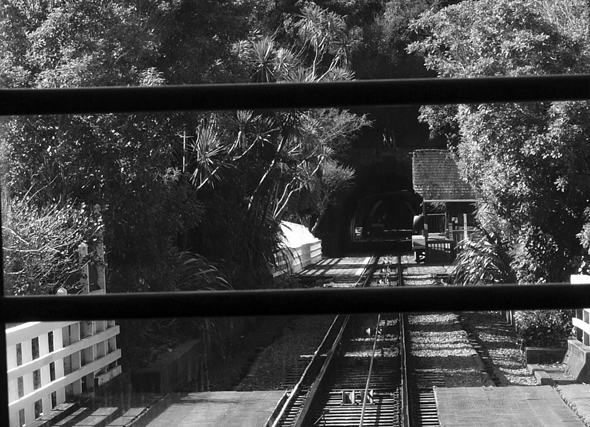Stained Fences and Freedom
 Photography by Devon Butler
Photography by Devon Butler
I thought about borders on one of those afternoons before the beginning of term, that are as beautiful as they are fleeting, helping my girlfriend stain her backyard fence. The job seemed simple enough, though a tad daunting given that the fence stood several feet higher than me. It was a job reminiscent of the classic suburban dream – a sprightly nuclear family surrounded by typical symbols of material success, and the token picketed fence.
The right to one’s own property is one of the hallmarks of vaunted Western freedom. This right applies not only to physical assets, but to our thoughts: the right to our own ideals, beliefs, opinions, cares, desires, dislikes, and happiness. The picketed fence can be considered a classic symbol not only of material independence, but of personal individuality. In the context of a largely individualistic North America, this symbol is regarded as a saliently positive one. And while in North America there are two sides of the fence – external division and internal solidification – the emphasis is decidedly placed on the latter.
Though my staining task was not particularly complex, I take pride in the way I am able to apply the coat evenly, and compensate for imperfections in the wood. How did I develop this pride? I do believe that the individualist perspective has benefits; the rhetoric of individuality is one that actively inspired me throughout my adolescent years. Within me it has cultivated personal responsibility for my actions as well as the confidence that I can achieve whatever I have the will to. It seems, however, a great irony of individuality that it cultivates that sense of boundlessness while as a byproduct promoting the isolation of the individual within themselves. In this whirlwind of thought I take a moment of respite from my staining.
Staring at the fence before me, I work instead of trying to determine what it might represent. It seems counter-intuitive I think to myself, that a fence could possibly be used for anything but division. A divide between what I own and do not own; between what I care about and what I do not care about; between what I believe and do not believe; between myself and the other. At this moment frustration overcomes me. I begin to view the yet half-stained fence before me as a prison, as an obstacle. Should we not just tear them down? Why do we work so hard to erect and preserve these divisions within our communities and within our selves? The answer to those questions comes as quickly to me as the realization that I need to continue staining; after all, it would be unfair to expect my girlfriend to pick up my slack, wouldn’t it?
I briskly dip my brush in my container full of stain. I imagine that I would no sooner ask society to tear its fences down than I would tear down my own. After all, don’t these things have practical purposes? The fences and walls of my house, those are easy: they protect me from the elements, maintain my privacy, and keep out unwanted individuals. I imagine the fences of my mind act in a similar fashion; they allow me to let in those people I see mean me no harm, as well as allow me to act accordingly with those that I deem of less amiable intentions.
I glance again at the fence towering a few feet higher than myself. I frown. While I will maintain that physical and personal fences are necessary, the height of the fence before me does seem a bit ludicrous. Not only because it makes for a heavier workload, but because it represents to me that oft preached hyper-individuality that verges on isolationism. After my work is complete I take a breath, sitting down to rest. Maybe it is possible that we can maintain our own individuality without having it sever our connections with the greater community. While bearing this in mind I reflect on the fences in my own mind, and in the greater community. While I take them to be useful with a discerning eye they seem rather…stained.